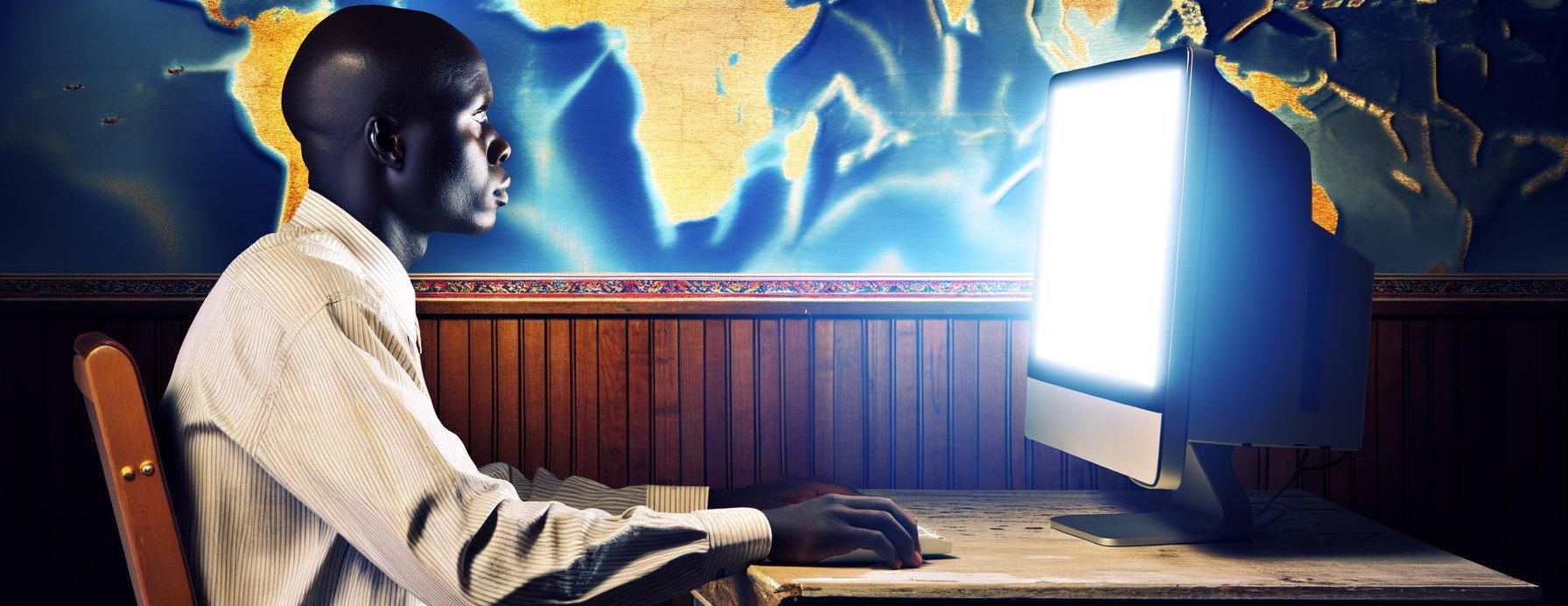The book industry is thriving, and self-publishing is on the rise! If you want to learn more about how to self-publish a book, you’ve come to the right place.
Self-Publishing
by Paige Allen
Dear Authors and Publishing Partners,
As we close out 2025, I want to thank you for trusting us with your creative work. Helping bring your books to life and into the hands of readers, booksellers, libraries, and stores around the world is a responsibility we take seriously. Your dedication, innovation, and independent spirit push us forward, and the momentum you created this year is reflected in the progress we’ve made together.
Subscribe to Our Blog
Authors can revise their books at any time—and sometimes should. Revising a published book doesn’t mean something was “wrong.” For indie authors, it’s a strategic advantage. Of course, you'll want to make copy edits as needed, but there are many other instances when making revisions to a book can improve reader satisfaction, attract a new audience, support a relaunch, or even capitalize on awards and cultural trends.
by Sam Rhodes
It's so important for publishers to meet their audience where they are. With their soaring popularity, offering an audiobook format for your title is more critical than ever, whether you’re an indie publisher or one of the big five. While hiring a professional narrator is the most common path, author narration is an attractive option as well.
What happens if your book gets stuck in IngramSpark's title processing? In this article, we'll review file specifications and common file errors that will delay the process.
Want to see your books on the shelves of your local library? The good news is that it's absolutely possible, and it's more achievable than you might think. Libraries are a powerful marketing channel for an author’s work. They often champion books to their communities, reaching more than 172M registered public library users across the United States.
What do Stephen King, J.K. Rowling, and E.L. James have in common? They've all used pen names to write in different genres—King as Richard Bachman, Rowling as Robert Galbraith, and Erika Leonard as E.L. James. If you've been dreaming of branching out and writing something far outside your usual genre, you're facing the same question these bestselling authors confronted: should you use a pen name or write under your established name?
In an age dominated by TikTok, Instagram, and rapidly changing social media algorithms, you might wonder if blogging is even still relevant for indie authors. The short answer? Absolutely. While social media definitely has its place in your marketing toolkit, blogging is still one of the most powerful, sustainable ways to build your author brand and connect with readers.
The secret to smart self-publishing isn’t just writing. It’s positioning. Here’s how to make your book visible, credible, and irresistible — before you ever write another word.
Readers often judge a book by its cover—especially in today’s crowded marketplace. While it's true that content, reviews, and marketing all influence their final decision to buy, it’s the cover that first catches their eye. If your book cover looks dated, off-genre, or unprofessional, readers may pass it by without a second glance.
While most self-published authors don't have thousands of dollars to pour into big advertising campaigns or flashy PR strategies, they still want to get their books into the hands of as many readers as possible. The good news is that there are a number of ways to grow your audience organically, and you don't always need a big budget to make it happen. In fact, some of the best exposure can come from grassroots reader communities, where word-of-mouth is king. That's where reader communities come in.
Are you struggling to make your book stand out in a sea of new titles? Or just looking for a more innovative way to let your unique story shine beyond the edges of its cover? Augmented reality (AR) might be the creative tool that unlocks and illuminates an entirely new layer of your story’s expression.
SEO for self-published authors isn’t just a buzzword—it’s the difference between your book getting buried in a crowded marketplace and your work showing up when readers search for their next book. Relying only on word of mouth or social posts just isn't enough. By weaving in the right keywords, building a simple author SEO (search engine optimization) plan, and focusing on helping readers find you, you’ll boost your book’s visibility, connect with the right audience, and very likely see more sales.
Readers often rely on reviews when deciding which book to pick up next, and professional book buyers are no different. But while casual readers might browse Goodreads or TikTok, industry pros are looking for insights from trusted sources. That’s where professional book reviews come in.
You finally finished your book — a huge milestone. But now comes the hard part: getting it into readers’ hands. If your self-published book isn’t selling as well as you expected, you’re not alone. Many indie authors run into the same challenge — often due to a few common book marketing mistakes.
If you're excited to introduce your self-published book to book clubs or reading groups, consider taking a friendly, thoughtful approach. Reach out directly, build connections, and make your book easy for readers to find and enjoy. Having a book club kit at the ready will make this process much easier for you when you find groups that you feel would be a good fit for your book.
Below, you'll find a list of 8 items to include in your kit to make sure you're book club-ready.
Make sure your metadata is in tip top shape for optimal SEO and online discoverability.
Genre fiction refers to books that are written according to a particular theme or style. Crime fiction, romantic fiction, or fantasy fiction are examples of popular genre fiction. Fiction readers are very genre-specific, and your metadata (especially keywords and categories) tells them at a glance if your book meets their interests.
Understanding your writing style is essential as it can greatly influence both your productivity and the pleasure you get from writing. When writers operate in a way that aligns with how their brains work, writing feels more natural and sustainable. That confidence shows in the work—and makes the writing habit easier to maintain.
Every writer is different, but determining whether you’re a plotter, pantser, or plantser can help you tailor your writing (and editing) routine, set realistic goals, and find techniques that work best for you.
When self-publishing a book, one piece of marketing advice will come up time and time again: secure reader reviews. People reading, enjoying, and talking about your book is a strong social proof signal for potential readers. (If you’re not familiar with the term, social proof is the idea that people are more likely to trust or try something if they see others doing the same.)
Romance and Romantasy have become cultural powerhouses, captivating millions of readers and redefining the modern book scene. With bestsellers topping the charts, and viral recommendations sweeping across social media, the demand for deeper emotional and immersive stories is at an all-time high.
When you're creating your marketing strategy and thinking of all the ways in which you can promote your book, it's likely that Pinterest isn't at the top of your list. It's been around for years, it's not known for the bells and whistles that some platforms offer, and it's been primarily known as the the home of crafts and DIY projects. However, you're actually doing yourself a great disservice by overlooking the promotional possibilities that exist with Pinterest.
When you think about how to promote your book around the holidays, your mind very likely goes straight to the traditional season of Thanksgiving, Black Friday, Cyber Monday, and the December holidays such as Christmas, Hanukkah, and Kwanzaa. You may even include New Year's Day, since so many people are looking to start the new year with new habits and a positive outlook. However, what about all those other holidays we observe during the rest of the year? Never underestimate the power of a good promotional opportunity!
Let’s be honest: breaking through the noise as an indie author is tough. You’ve got a great story, solid writing, and a gorgeous cover—but so do thousands of other people. So, how can you stand out? One word: augmented reality (AR).
by Leah Bennett
A Self-Published Author’s Guide to Hooking Readers and Leaving Them Wanting More
Book series are a fantastic way for self-published authors to boost sales, develop a devoted fan base, and possibly even make it to the bestseller lists. Avid readers love to dive into a series, and authors who know how to grab readers' attention from the start and keep them hooked are reaping the rewards. Here, we’ll share some tips on creating a binge-worthy series that keeps readers eagerly coming back for more.
According to Backlinko, in the U.S., an estimated 158 million consumers listened to a podcast in the last month (as of 2025)—with the most popular podcast platforms being YouTube, Spotify, and Apple Podcasts. That's an increase from 135 million monthly listeners in the U.S. in 2024. Obviously, people's interest in podcasts isn't slowing down.
So, what does that mean to you as a self-published author?
Self-publishing is evolving fast—and it's now more exciting than ever. From printed edges and interactive formats to game-changing tools like AI editing and augmented reality (AR), indie authors have more ways than ever to stand out. Those who embrace these trends are not only keeping up with what readers really want, but they're also helping shape the future of publishing.
Let's take a look at some of the biggest trends making waves now, along with some of those set to grow in the coming years.
by Sam Rhodes
There are many reasons readers might choose an audiobook over a printed book. Audiobooks can pass the time during a long commute or provide a more accessible experience. Or perhaps a fan wants to hear a story told in the author’s own voice. And, unlike in decades past—when audiobook listeners would find themselves dragging around cases full of cassettes or CDs (when they could locate an audiobook at all!)—audiobooks are now easy to find, easy to download directly to a smartphone, and easy to listen to whenever and wherever you want to get lost in a book.
In today’s crowded book market, attention is everything. For self-published authors, standing out isn’t just an option—it's absolutely essential. One powerful promotional tool that you might not have considered yet is the book trailer. Maybe hiring a professional to create one isn't in your budget, and/or maybe you don't feel like you have the technical skills necessary to make your own… but, did you know that producing a professional quality book trailer is now faster, easier, and more affordable than ever?
Launching a book is exciting, but it can also get expensive quickly. Between editing, design, printing, and marketing, the costs can pile up before your first copy even hits the shelves. The good news? You don’t have to foot the bill all on your own. There are tons of creative, community-driven ways to fund your book launch without draining your savings.
Your guide to some of the most prestigious and indie-friendly opportunities this year and next.
For self-published authors, book awards and contests offer recognition, credibility, and new readers. Winning or being a finalist can boost sales, attract media, and open new opportunities. While self-published books were once excluded from such competitions, the industry now offers many more opportunities.
I’ve written in the past about the importance of presenting a polished first impression with your indie book. Unlike a Big 5 author, you don’t have the luxury of name recognition or publisher prestige, so you have to refine that first impression in other ways—and one thing you absolutely can’t ignore is your book’s product page.
While I touched on descriptions, comp titles, and pull quotes in the previous post, I didn’t really get into the nitty-gritty of product pages… but there’s more to them than pure text! On that note, here are four key tips to optimize your book’s product page for reader interest and conversions.
If you’ve spent any time reading through our blog posts or learning about the self-publishing industry, you know how important it is to get reviews for your book. Reviews increase credibility, improve discoverability, and influence potential readers to pick up your book. In light of these many benefits, you should consider running a book review campaign, which involves strategically gathering and promoting reviews for your book. Follow the steps below to create an effective campaign that'll get your book in front of readers and increase book sales.
When growing your book’s visibility, engagement, and ultimately, sales, accessing the right audience is a must. There are over 5 billion internet users in the world today with an average of almost half a million new users every 24 hours.
by Leah Bennett
Dystopian literature, a subgenre of speculative fiction, has always been like a mirror, capturing society's worries and evolving to reflect the unique concerns of each era. Timeless classics like 1984, Brave New World, and The Handmaid’s Tale set the standard for bleak, cautionary storytelling, and the genre surged again in the 2010s with young adult hits like The Hunger Games and Divergent. As a result, many readers began to feel dystopian fatigue, citing predictable plots and overused tropes.
Now that dystopian fiction is making a big comeback—how can you find the right balance between grit, hope, and realism in your story that will keep readers engaged?
by Leah Bennett
Research…technically, it’s not a dirty word. However, to many writers, it might as well be. Though it can be fun, it can also be headache-inducing at times. All in all, well-researched books feel more authentic, and readers do appreciate attention to detail. Any inaccuracies in your setting, real-life events, or historical references will be noticed and could pull readers out of your story altogether.
Before the internet, performing research for a book was a lot more labor-intensive. Though not necessarily intimidating, it did require, at the very least, a trip to your local library to find books and articles about your subject. At most, you might have traveled to another state or country to be sure you got your details just right. Thankfully, we don’t have to go to those extremes anymore – unless we just want to.
In today’s digital landscape, authors face the daunting question of how to break through the noise and connect with readers. We’ve all heard the phrase “content is king,” but what does that really mean for author promotion? It’s more than just posting; it’s about crafting a strategic tapestry of online materials—articles, videos, engaging visuals—that build trust and cultivate a loyal audience.
At IngramSpark, we talk a lot about marketing, and for good reason. It’s a vital part of selling your book and becoming a successful self-published author. Our guides and blog articles delve into the how’s, when’s, and where’s, but it’s also really helpful to know what resources are out there to help you accomplish a well-thought-out and planned marketing strategy.
In today's digital world, metadata is the "secret sauce" for making your book discoverable. It's the hidden magic that helps readers find your book among the millions available online. While it might seem like just a technical detail, it's actually a fantastic marketing tool that can broaden your book's reach, boost your sales, and connect you with your ideal readers.
After you've put so much of your heart and soul into creating the perfect story, you do not want to neglect the power of your metadata. You want to call attention to what makes your book special, and make sure that everyone who might be interested in reading it will know that it exists. In this article, we'll dive into some often-overlooked aspects of metadata that can really make a difference in getting your book noticed and boosting your sales.
There are often many questions that arise around the topic of when to publish a book. What's the best time of year to publish for your particular genre? Is there a right time and/or a wrong time? Does it make a difference?
The truth is that there's no magical formula for determining when the prime time is to publish books of different genres, but we do have some clues based on sales data and industry trends. We've compiled a helpful list below for you to use in planning your next book, highlighting some of the most popular genres for each month of the year.
Are you doing everything you can to promote your book and your brand? Maybe you've got an author website, a blog, a newsletter, and social media profiles across all the platforms. It could be that you've done a few local book signings and gotten some good reviews. You may even have gone so far as to create a book trailer. You're doing all the right things, but is there more that you can do?
Book conventions, fairs, and festivals are popping up everywhere these days! No matter what kind of book you've written, there's a group of fans out there just waiting to dive into something fresh and exciting. These events are fantastic opportunities for both readers and authors. Readers absolutely love meeting their favorite authors and stumbling upon new books. Meanwhile, authors get the chance to showcase their work and grow their author brands.
Some of you may be seasoned pros at these events, but if you're a newbie just starting out, you might be curious about what to expect. We've put together a handy list to get you ready. Even if some tips seem like common sense, it's easy to overlook the basics when you're off on a new adventure!
If you’ve been creating content—whether blog posts, social media updates, or podcast episodes—you may already have the building blocks for a compelling book. Transforming your content into a book is a great way to share your ideas, build your credibility, and really connect with your audience on a more personal level.
This guide is here to help you, from taking a fresh look at your existing content to turning it into a polished manuscript and getting it ready for publication. With a little creativity and organization, you can transform your work into a book that resonates with readers and serves as a lasting testament to your expertise.
Self-publishing your book is quite an accomplishment, but unless you printed something deeply personal that’s just for you or a gift for someone close, you want everyone to buy and read your book. As an indie author, marketing is a huge part of your job, and IngramSpark has many resources to make that easier. One of our newest opportunities is Title Discovery Promotion.
A question I often receive from authors after they've published is in regard to why their book is listed for sale at different prices on different retailer websites such as Amazon, Booktopia or Barnes & Noble. The author has gone to all the trouble of working out a fair recommended retail price, only to find their book being sold on a retail website for half that amount—or sometimes double! How is that possible or even fair?
by Leah Bennett
Webcomics aren't just a digital trend; they're reshaping the entire landscape of the publishing industry, offering incredible opportunities for creators and readers alike. As the dynamic webcomic community continues to grow and evolve, so does the opportunity for authors to branch out and take their comics from the screen to the page.
This season, give a gift that fuels their passion for storytelling!
As the year quickly comes to a close, it's time once again to begin holiday shopping. Whether you know a self-published author, or you are one, this insightful guide is filled with excellent gift ideas to support an author's path in writing, publishing, marketing, and selling books.
by Leah Bennett
In case you haven’t heard, Taylor Swift has chosen to bypass the traditional publishing route and self-publish The Eras Tour Book under her new imprint Taylor Swift Publications, exclusively at Target on Black Friday. This decision gives her the opportunity to keep more of the revenue from her book than she would if she went through a traditional publisher, and it also gives her total creative control over her book—she can choose when to publish it, what her cover looks like, how much to charge, how to market it, and where to sell it—without having to answer to a large publishing company.
Updated November 19, 2025
Black Friday 2025 is on November 28 this year, and many retailers are offering deals through the weekend and into Cyber Monday on December 1!
Check out these great deals for writers that are available this year for Black Friday:
by Leah Bennett
America's obsession with true crime isn't new. One of the earliest known stories of crime involves the murder of a government official dating back to 1800 BCE in Ancient Egypt. People have been drawn to the darker side of human nature that presents itself in true tales of horrific crimes for ages.
With the publication of such books as In Cold Blood (1966) and Helter Skelter (1974), however, the genre became popular with more and more people. Since that time, it has evolved and branched out into all forms of media.
If you're interested in trying your hand at writing for the true crime genre, here are some tips to get you started.
Updated October 21, 2025
The holiday season is just around the corner, and a little planning now can set you up for great end-of-year book sales. Ready to make your book stand out from the competition? Here are five essential steps to maximize your holiday sales, along with some helpful resources:
Readers have loved mystery novels for centuries, but what exactly makes for a compulsively readable mystery? What is it that makes someone want to finish “just one more chapter,” no matter what time it is? There are many aspects of a mystery that draw readers in, but a well-planned, slow-roll reveal of clues and evidence will keep readers guessing until the very end.
Comics have been around for about 100 years in some form or another and have gained enduring popularity among particular markets. Reading and collecting comic books may be a niche hobby, but those who are into it are truly devoted. Many people aren’t aware of this, but you can self-publish comic books just like you can with novels, children’s books, and almost every other form of the printed word.
by John Burke
Part Four of a Blog Series
This fourth and final installment of the complete guide to creating an author website will delve into monitoring the users that visit, what happens during those visits, and what that can tell you about how well your website is performing.
by John Burke
Part Two of a Blog Series
Ideally, your domain name should be yourname.com. If you have multiple books, this should be a no-brainer. Obviously, you wouldn’t get a domain name for just one of your books if you have an author website with multiple books. What if you already have a website using the domain name of one of your books? Now might be the time to consolidate under one website using your name. Your name is generally more searchable, and by putting all of your books on one site, you allow readers looking for one book, in particular, to naturally discover your other works. Even if you are a first-time author with one book, it should still be yourname.com.
While we often talk about authors as a collective whole, the truth is that the advice we give to nonfiction writers often doesn’t apply to those who write fiction—precisely because each set of authors is involved in such a different process (and product).
Want to see your books on the shelves of your local library? It's a goal that feels both exciting and daunting, but the good news is that it's absolutely possible, and it's more achievable than you might think. While it does require some effort, research, and persistence, thousands of indie authors have successfully placed their books in library systems across the country. With the right approach and a willingness to do some legwork, you can join their ranks and reach readers who trust their local library to introduce them to their next great read.
A common struggle many self-published authors face is creating files that are usable by printers such as IngramSpark. With the right files, uploading to IngramSpark is relatively simple, but when anything is wrong with the files, the process can quickly become a nightmare.
Born from a 1970 New York City march honoring the Stonewall Uprising, Pride Month has become a global celebration. It's a time to champion self-acceptance, equality, and the richness of diversity. Recognizing the contributions of LGBTQ+ individuals to history and culture, IngramSpark is proud to spotlight indie authors and publishers who bring the LGBTQ+ experience to life.
In a previous post, we discussed the many reasons why you should sell your book globally and how Global Connect makes it easy to get into international markets. The next question you’re probably asking yourself is how to go about promoting your book in those markets. Here, we'll share some things to consider when stepping into the international scene.
Updated February 10, 2025
Through IngramSpark's extensive distribution channels, your title has the potential to reach audiences around the world. For optimized global discoverability of your title regardless of the content language, use these metadata guidelines and suggestions. All content must follow our Catalog Integrity Guidelines.
You may not have even considered creating author merchandise as a promotional tool, as merchandising is still a relatively new concept in the world of self-publishing. However, think about the power of merchandise in promoting all of your favorite brands, tv shows, or movies. Per Indie Wire, Star Wars retains its 2012 Guinness World Record title as history’s most successful film merchandising franchise. It amassed an unfathomable $32 billion from lucrative merchandise.
If you want to write something truly unique that will also serve to grow your brand as an author consider writing a memoir. No one has the same story as you or will be able to tell it in your style. Your fans want to get to know you, and you can go much deeper in a memoir than in blog articles or social media posts. As an independent author, your brand is you.
Dickinson, Frost, Angelou, Hughes, Whitman . . . the names alone conjure up a rush of "the feels." These names inspire. They are worthy of remembrance, but that's not enough. National Poetry Month is a call to not only remember these inspirational artists, but also to think about and share how their work and the art form it embodies has endured to influence millions of lives. Poetry extends across cultures and generations and you have a role to play in that.
The term “self-publishing” is often associated with the vision of an author struggling to do everything—from editing to marketing—on their own. It’s true that self-publishers wear many hats, but that doesn’t mean they’re doomed to do everything without help.
Most independent authors don’t consider copyrighting until they're in the process of self-publishing, and that’s okay since it doesn’t have to be done before you publish. It can be a little complicated though, and it's often the last thing writers want to think about during the excitement of self-publishing their work. Getting a firm grasp on what copyrighting means, and the steps you’ll have to take, is essential, and you can do it at any point in your journey.
If you’ve already found success selling your self-published book and are looking for a wider market, you may want to think about translating your book so that as many readers as possible can enjoy it. Less than 20% of the world speaks English, so by translating your work into another language, you can potentially reach hundreds of thousands of new readers.
When it comes time to print and distribute your book, it may seem as if many options are open to you. On the surface, this is true. However, a little-known secret in the self-publishing industry is that most of the “publishers” that purport to print and distribute your book for you go through IngramSpark.
Almost all writers realize the value of feedback and editing from others. While a few may write only for themselves, most want others to see, and enjoy, their work and to know how their work is received. For authors preparing to publish their book, the process often involves others such as friends, family, beta readers, editors, and maybe a mentor. This group should also include other writers, especially those who have published before. Don’t miss out on the value of peer input.
Most people think of writing, self-publishing, and selling their books as a solitary endeavor. Though it can be, it doesn’t have to be. Usually, you’ll find great success by working with others, especially in the realm of marketing and promotion. There are many benefits to working with other authors. Here, we’ll share some of those benefits and expand on how you can find collaborators and get them to work with you.
Have you dreamed about your book being discussed by a book club, bringing a community of readers closer, and inspiring lively conversations? Authors don’t write just to have their book sitting on a dusty shelf, and book clubs are a great way to get your work out there. Keep reading to learn how to market your book to book clubs.
Updated October 24, 2024
The new year will be here before we know it, and it's only natural to look back at what we've done over the last year. As we see the past months in review, we often think about what we want to accomplish in the coming year. This is especially necessary as a writer. Now is the perfect time to take stock of writing goals: which ones you met, which are still valuable, and which ones you should set for the coming year.
Here, we offer some goals to consider adding to your list for 2025 to make the year even more successful.
If you've recently joined a new writing group or if you've started one of your own, you may be looking for some activities for your group meetings. Some groups may have stated rules and goals, depending on the type of group to which you belong. However, there are many fun and productive exercises you can incorporate into your meetings.
In previous posts, we’ve talked about the benefits of a writing group and how to find one, but sometimes finding a group you want to join is difficult. Maybe you’ve visited some but they didn’t fit your needs, or maybe there just aren’t any in your area. If that’s the case, you should consider starting your own group. We've got some tips to help get you started.
Writing and self-publishing are not solitary endeavors as some might assume. Sitting alone in front of a computer can only get you so far. If you're struggling to get your words onto the page or to cross the finish line and self-publish your book, joining a writing group can help.
One of the wonderful advantages of self-publishing and print-on-demand is that you don’t have to have a large stock of your book taking up space in your home. Nevertheless, indie authors should definitely have some copies on hand for a variety of uses. Neglecting to do so could cause you to miss out on many sales opportunities. Here are 11 reasons why you should buy your own book.
When you embark on the journey of getting a book published, there’s a lot to consider and one of the things that should be on your priority list is how much you’ll be pricing your book for, which is a crucial piece of your book metadata. The editors of traditional publishing houses must fill out a profit and loss spreadsheet (P&L) before they can even acquire a book, let alone publish a book. The P&L accounts for decisions they’ll need to make in order to turn a profit on the book they hope to add to their list. So one of the best places to start when determining the profit goals of your book publishing endeavors is to seriously consider how you'll be pricing your book.
Some of the best books in the world already exist, pretty much fully formed, inside the author’s head. And there they stay, keeping you up at night while you think of more ways to explain your concept, rewriting it all inside your head. At some point, you realize that it’s been quite a long time and nothing has actually come out. You have so many ideas but you don’t know where to start with writing them all down.
by Leigh Pierce
There are millions of books in the world, with more being published and distributed every day. The only way to keep track of them is with unique identifiers, which we call International Standard Book Numbers, or ISBNs. Each format of a book should have its own ISBN—its unique identifier that belongs only to that title and format—so that customers and retailers can place an order for the exact book they want.
Updated October 24, 2024
There's an unspoken hope that at 12:01 am on January 1, 2025, a "magic wand" will somehow conclude the trying times of the past year and steer us back toward normalcy.
Nonetheless, we have this moment to reflect on 2024 and anticipate a fresh beginning, so today I present five New Year’s resolutions every author should consider for 2025.
Our world needs memoirs.
It needs individuals who are willing to share the honest reality of who they are and the things they’ve experienced. When someone chooses to read a memoir, it means they’re searching for something. They’re searching for understanding, to gain perspective or insight, and they’re hoping to find something within your story that they can resonate with—perhaps something that gives them hope.
Technology has made it easy for authors curious about self-publishing a book. Self-publishing offers a cost-effective way to share your book with the masses and make some money from your writing. Whether you are hoping to self-publish a print book or an electronic version, here are eight tips on how to self-publish a book.
You've worked hard to perfect your poems, and now you're ready to turn your collection into a finished book. Exciting, we know, but can you go it alone, or should you hire a book designer? There are several things to consider when turning your manuscript into a work of art—but don't worry. We’ll go over the eight most critical elements on the road to publishing your poems.
Authors can self-publish a book in many ways, from print publishing to digital publishing. No matter the format you choose, providing an ISBN is an important component to publishing your book. Let's talk about all things ISBN!
At IngramSpark, our mission is to support you through your self-publishing journey. Nothing is more inspiring than writers like you sharing your stories—the reason behind your book, your "why." In May 2020, we asked the writing community to share their #WhyIPublish stories, and the response was overwhelming. In today's post, we're sharing some inspiring stories and a breakdown of the data from our #WhyIPublish survey.
by Alexa Glazer
Updated April 17, 2025
You did it—the hard part is over. You wrote your book and have it in your hands. You've spent months, possibly even years, writing this book. But... have you considered publishing the audiobook version of it?
If a book’s dedication is the opportunity to blow someone a kiss, a book’s acknowledgment feels more like the sort of welcoming hug one might give someone they care about after a long journey. There’s a distinction between the two. It comes down to breadth. Let's break down how to write book acknowledgments.
It's been over two years since we launched IngramSpark's self-publishing podcast, Go Publish Yourself, and we've been blown away by the positive response from indie publishers! With nearly 200,000 listens in more than 70 countries, the people have spoken—and we look forward to sharing more episodes with you in Season 5. Keep reading as we revisit some of the podcast's most popular episodes and share exciting news about what's to come!
Are you considering publishing your book in hardcover? Or converting your existing hardcover to IngramSpark’s new jacketed case laminate option?
Read on!
You can write the absolute best book in the world, have top-of-the-line book distribution and quality, but another essential part to being a successful publisher is taking the time to invest in expanding your publishing knowledge and expertise, because, at the end of the day, your book’s success needs your input.
I think all people go through important transitional moments in their lives, and if we’re lucky, during those moments we stumble across tools that help us to find and better understand ourselves. When my mom died just before my final year of art school, I walked head-first into one of those major life-altering periods and my sense of self seemed to have been lost somewhere along the way. But there’s an interesting, and slightly magical, thing that happens when we lose a piece of ourselves — it makes room for new discovery. For me that discovery was poetry, specifically in published, physical form.
Ask 100 different people who have self-published how difficult it was, and you will probably get 100 different answers. After all, we are writers. Give us an open-ended question and the probability we give you a longer answer than you wanted is high. But the truth is, the self-publishing journey and the process you take to release day is different for every person.
The fantasy genre in literature, especially that of the Young Adult (YA) age group, is a constantly changing and maneuvering beast of new ideas, expanding themes, widening horizons, and tedious design—not only inside but outside of the book.
Though the days of women selecting masculine pen names for fear of being unable to publish are predominantly past, authors still frequently write under names that are not their own. Why is this?
When I was nine years old, my fourth-grade teacher read a story to our class about a boy and his two hunting dogs in the Ozark Mountains. Where the Red Fern Grows did more than make me teary-eyed; it filled my young mind with wonder, imagination, and inspiration.
As we look back on 2019, we want to take a moment and celebrate some of the best and brightest ideas on the blog. The verdict is in—here are your top ten most viewed self-publishing blogs from IngramSpark in 2019!
by Kelsey Kloss
Learning a new language is like learning to see the world in a new color: you suddenly notice shades of sounds in rolled r’s and guttural consonants, and potential friendships tucked behind an “hola” or “salut.” That’s why it’s so special when a child has the opportunity to learn another language, especially through a book you write! As language learners embark on this journey, bilingual books can be an incredibly helpful resource for them.
by Yemi Penn
There was a time when becoming an author was a far-fetched dream, and writing a paper was the closest anyone in my community had come to sharing a message. The journey to self-publishing a book has not been a straightforward one. It has been one of mental challenges, imposter syndrome, and lack of knowledge around the phenomenon that is indie publishing—but it's been so worth it.
Your imprint name is different from your author name, which is the name you are writing a single book under. It’s also different from your publisher's name. Are you confused yet? Let's break down what an imprint is and how to set it up.









































































































